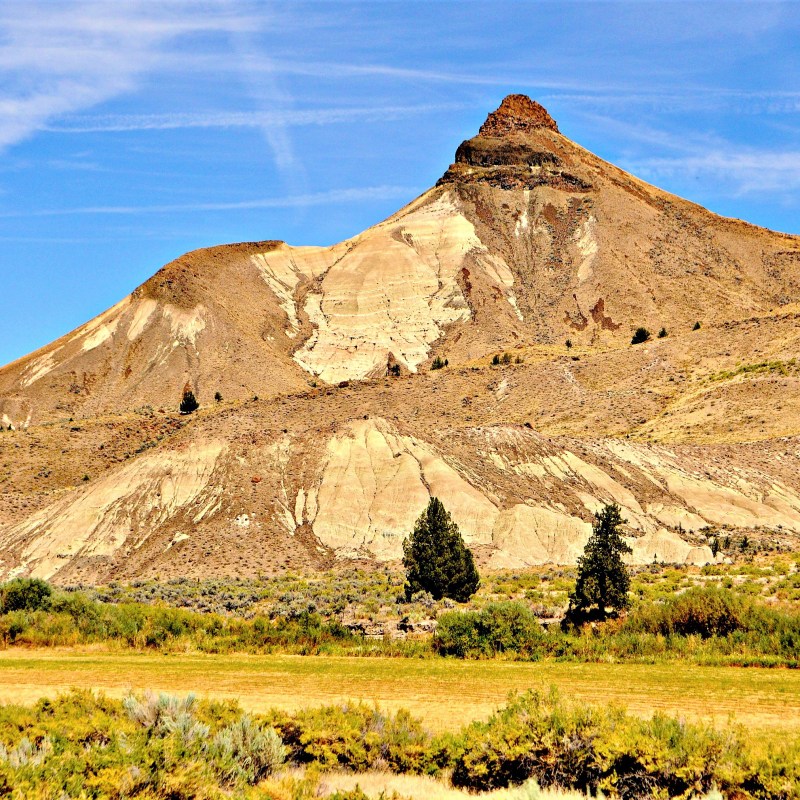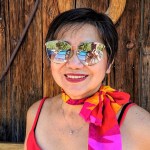
We like to vary our routes, even if our road trips end up taking longer than the expected time, mostly because we like to explore and enjoy the sights to see along the way.
Videos by TravelAwaits
Last month, I wrote about 10 scenic stops we enjoyed in Kansas, Nebraska, and Colorado during the Midwestern leg of a road trip from my sister-in-law’s home to see my husband’s daughter. Here, I detail our itinerary as we continued westward to a visit with his son in Boise, Idaho, and ending at my daughter’s home in Seattle.
Aside from the visits, we made it a mission to discover new stops along the way. So, no, we did not pass through Jackson Hole, Grand Tetons, or Yellowstone. Instead, here are eight surprising stops we made, enjoyed, and recommend.

1. Fossil Butte National Monument, Wyoming
This little-known park is located 15 miles west of Kemmerer, Wyoming, just six and a half hours from Denver. In fact, not even 20,000 people visit it annually. But it is actually the world’s best collection of fossils from the Eocene Epoch (56 to 34 million years ago), the warm period that produced the very first animals. Fossil Lake, the smallest of three great lakes at that time, had so many fossils that when they were discovered, miners dug them up to sell to collectors.
Commercial fossil collecting is now prohibited within Fossil Butte National Monument. But the visitor center alone features over 80 samples, each one incredibly intact, not pieces that need to be assembled. There are whole fish, crocodiles, turtles, palm fronds, and more from the epoch. In fact, there are trails that will lead you to fossils still intact on the ground, plus some that are still in the process of being excavated. There may not be sweeping vistas, but that is not what this park is all about.

2. JCPenney Mother Store, Wyoming
We were driving from Fossil Butte National Monument to our campground when we chanced upon the JCPenney Mother Store and Museum. On a corner of the main street of the small town of Kemmerer, Wyoming, which has a population of under 3,000, it was the first outlet of the department store giant — which today has 1,100 stores in 50 states — built there in 1902. We wondered why it began there, but then again the first Walmart is also now a museum in the small town of Rogers, Arkansas. We later learned that James Cash Penney’s tiny home is also a museum just down the road. Sadly, we missed the chance to see it as we had an agenda to stick to.

3. Lava Hot Springs, Idaho
It is only two hours from Kemmerer to Lava Springs, Idaho, on I-30. A tiny town with a population of less than 500, it is part of the Pocatello Metropolitan Statistical Area of Idaho. Because of its numerous hot springs that are quite good for bathing, Lava Springs is a popular weekend resort location in the state. There is also a mildly turbulent river running through part of the town that is perfect for tubing. When we visited, there were lots of large yellow tubes so radiantly bright that were a welcome sight for this lover of the color yellow. This was such a relaxing recreational stop for us.

4. Boise, Idaho
It took us four hours from Lava Springs on I-86 to reach Boise. It is the largest city, and the capital, in the state with a population of over 200,000. My husband’s son is married to a member of Boise’s Basque community. Numbering about 15,000, it is the second largest such community in the U.S. after Bakersfield, California. It is also the fifth largest in the world behind Mexico, Argentina, Chile, and the original Basque Country in Spain and France. In fact, the current city mayor is of Basque descent. Downtown Boise features a vibrant section known as the Basque Block, and that’s where we got the chance to stir the paella cooking in huge pans about five feet in diameter.
We also spent a great deal of time around the huge farmers market hosted by the Idaho Farmers Market Association. It opens every Saturday, 9 a.m. to 1 p.m. from April to October. From there, we moved to the historic Boise Depot, opened in 1925. Listed in the National Register of Historic Places, it is a beautiful Spanish-style building set atop a small hill that provides a great view of the city. Cascading down the front side is the lovely Platt Gardens.

5. John Day Fossil Beds National Monument
We usually go through the Yakima Valley to get to Seattle from Boise. But during this trip, we continued west through Oregon to pass by a national monument we were curious to see. It took us four hours from Boise on I-26. The John Day River basin is now home to fossilized plants and mammals that lived there between the late Eocene, about 45 million years ago, and the late Miocene, about 5 million years ago, so later than those found around Fossil Butte.
John Day Fossil Beds National Monument is composed of three geographically separate units: Sheep Rock, Painted Hills, and Clarno. The Sheep Rock Unit is the first you will encounter when coming from the east. It is near the town of Kimberly and is composed of the James Cant Ranch Historic District, the Thomas Condon Paleontology Center, Cathedral Rock, and both the park headquarters and visitor center.
Because it was getting late as we drove in, we hurried on to the Painted Hills Unit. Halfway between the other two units, it is about nine miles northwest of the town of Mitchell. I was complaining that the hills were not quite as colorful as I expected when, suddenly, one by one the desert beauties appeared. They were indeed art works of Nature. They looked so fragile and I was afraid they might soon disappear. We enjoyed them so much because we could get up close to them. Besides, there was hardly a soul around. Wondering why this unit was not more famous, we were glad we made the detour to see this park.
Unfortunately, we ran out of time to visit Clarno.

6. Bruce And Brandon Lee Gravesite, Washington
In about another six hours on I-90 after a night in Mitchell, we finally reached Seattle. But we did not proceed to my daughter’s house right away. I had lived in Seattle for a year before we started RVing, and I already knew then that Bruce Lee was buried there. I had also heard a lot about the Gum Wall and the Fremont Troll (more on both below), but I never found the time to visit any of the three. So, we made it a point to rectify the error. After all, we have made it our job to visit all these interesting places and write about them.
Situated in the Capitol Hill neighborhood of Seattle, Bruce Lee’s gravesite has become a national and global pilgrimage site. Halfway up a hill in Lake View Cemetery with unobstructed views of Lake Washington, his space is distinctly marked by evergreen shrubs. It is the final resting place of the legendary Chinese American martial artist and film star. His son, Brandon, lies beside his father here. We spent some minutes of silence there.

7. The Gum Wall, Washington
I had been to Pike Place Market in Seattle countless times. What I never realized is that, right under it, in Post Alley, you can find The Gum Wall. So, don’t forget to go down to it when you visit the market. The wall is made of brick but is covered in, yes, used chewing gum. In fact, parts of the wall are covered several inches thick, 15 feet high, for about 50 feet. The tradition began around 1993 when patrons of the Market Theater Box Office nearby stuck gum to the wall. Theater workers diligently scraped the gum away twice but eventually gave up around 1999 when they kept coming back. Too bad we are not gum-chewers; we were unable to contribute to the monument-building.

8. The Fremont Troll
There is a colossal statue called the Fremont Troll under the north end of the George Washington Memorial Bridge in Seattle’s Fremont neighborhood. We actually got a bit lost before we found it. The troll is clutching an actual Volkswagen Beetle as if it has just swiped it from the roadway above. Eighteen feet high and 13,000 pounds in weight, it is made of steel rebar, wire, and concrete. In fact, his right eye is a hubcap. It is hard to find a place to park though. And to wait our turn to get pictures took a bit of patience because there were so many people.
Here’s how the troll came to be. The area under the bridge was becoming a dumping ground and a haven for drug dealers. In 1990, the Fremont Arts Council launched an art competition to rehabilitate it. Four local sculptors won. Steve Badanes, Will Martin, Donna Walter, and Ross Whitehead won the opportunity to have their art featured under the bridge. They borrowed the idea from the Norwegian fairy tale Three Billy Goats Gruff.
From fossil beds to the Fremont Troll, our road trips are truly made more precious by surprising stops like these. In fact, we continue to change our routes so we may discover more of them.
